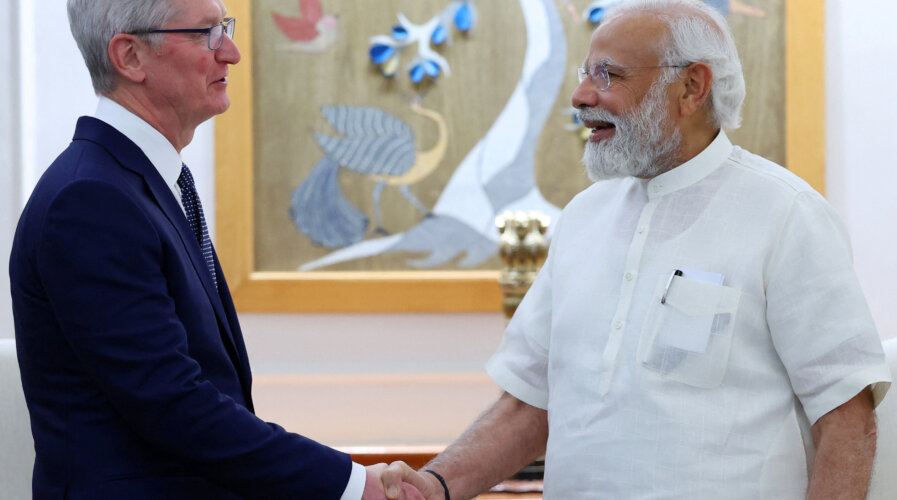
India is luring more electronics manufacturers with an additional US$2b incentive scheme (Photo by PIB / AFP) /
India is luring more electronics manufacturers with an additional US$2 billion incentive scheme
- India wants to bring more electronics production to the country as nations look for alternatives outside China.
- The financial incentive aims at courting manufacturers of laptops, tablets, and other electronic hardware.
- It follows the incentives of 73.5 billion rupees (US$1.02 billion) unveiled in 2021, which many claimed to be insufficient.
In 2021, under its production-linked incentive (PLI) plan, India launched a 73.5 billion rupees (US$1.02 billion) scheme to stimulate local manufacturing and exports of electronics such as laptops, tablets, personal computers, and servers. Unfortunately, the program didn’t draw many companies, as the incentives were deemed insufficient.
However, 2022 saw India’s smartphone exports doubling to over US$11 billion, with Apple contributing nearly half of this total, according to the ICEA and industry sources. The achievement solidified the belief of the country’s government that India is on its way to becoming a global leader in the mobile devices segment.
Prime Minister Narendra Modi wants to capitalize on the early success of Apple Inc.’s local assembly operations — which have helped the US company produce about 7% of its global iPhone output in India. In short, Modi wants to pitch the country as a viable global manufacturing hub.
For the country to continue its growth momentum, India decided more incentives would be the best bet in luring electronics manufacturers. Hence, Delhi unveiled a 170 billion-rupee (US$2.1 billion) financial incentive plan to draw laptops, tablets, and other hardware makers to the South Asian nation.
The timeline could not have been better since New Delhi wants to benefit from China’s trade war with the US, prompting companies to weigh other options. “India has crossed a huge landmark in mobile phones with exports of US$11 billion in the past year,” India’s technology minister Ashwini Vaishnaw said at a news conference Wednesday. “We want to take this momentum forward.”
Since Apple has only begun making iPhones and is yet to start on iPads or MacBook laptops, fresh incentives could push the Cupertino, California-based company to consider such moves. A report by Bloomberg suggests other manufacturers that could take advantage of the new measures include Dell Technologies Inc., HP Inc., and Asustek Computer Inc.
The scheme would also help India achieve its ambitions to become a powerhouse in the global electronics supply chain, targeting an annual output worth US$300 billion by 2026.
How will the incentives lure electronics manufacturers to India?
Reports indicate that the plan proposes a cashback of 5% to companies on factory gate prices of finished products. Local sourcing of components will help manufacturers win more financial benefits. The latest plan is also set for six years, with the country offering cashbacks for manufacturers on sales of locally made goods that exceed an annual target.
The government said these companies are expected to produce nearly US$41 billion of IT products and create more than 75,000 jobs. MAIT, an essential industry body representing manufacturers such as Apple, Dell, and Samsung, welcomed the move and said it would help meet the domestic demand for IT products and boost exports.
“We believe this scheme will help the IT hardware sector to achieve the same level of success India had with smartphone manufacturing,” Ali Akhtar Jafri, Director General at MAIT, told Reuters.
READ MORE
- Ethical AI: The renewed importance of safeguarding data and customer privacy in Generative AI applications
- How Japan balances AI-driven opportunities with cybersecurity needs
- Deploying SASE: Benchmarking your approach
- Insurance everywhere all at once: the digital transformation of the APAC insurance industry
- Google parent Alphabet eyes HubSpot: A potential acquisition shaping the future of CRM


